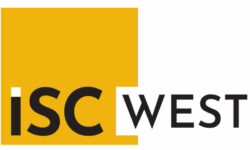SaaS: The ‘New RMR’ in Security
The proliferation of software as a service (SaaS) offerings is changing industry paradigms. Here’s how integrators can leverage SaaS to differentiate themselves and generate more RMR.

(Image: ArtemisDiana/stock.adobe.com)
Recurring monthly revenue, or RMR for short, has long served as the lifeblood of security dealers, enabling them to grow their businesses and perhaps achieve a hefty sum when they are ready to sell as valuations are typically based on RMR multiples. However, the dynamics of the industry have changed dramatically in recent years.
The advent of do-it-yourself (DIY) alarm systems that enable home and business owners to monitor their properties without the aid of a professional installer has proven to be tremendously disruptive to the marketplace.
According to a report published earlier this year by Parks Associates, half of all security system sales in the past year were DIY offerings. Even more concerning for security dealers, however, was the fact that if this current trend continues, the install base of DIY will soon surpass that of professionally installed and monitored systems.
“DIY providers offer multiple smart home devices to accompany their systems, including cameras, smart thermostats, and smart lighting options,” Jennifer Kent, VP of research, Parks Associates, says in a statement. “Device manufacturers can also add a monitoring line to any product with occupancy sensing, connectivity, and a control platform, so competition within the DIY space, as well as between DIY and professional offerings, will intensify in 2022.”
In the span of less than a decade, the industry has gone from being concerned about how cable and telco firms entering the space could capture market share from established security companies to seeing low-cost DIY systems pull neck-to-neck with professional solutions. Things are not much better for those that focus more heavily on the commercial space either.
With IP and Internet of Things (IoT) devices becoming more commonplace, the market for many products, including the sale of surveillance cameras, has become a “race to the bottom” and subsequently resulted in lower margins for dealers.
Given this confluence of factors, systems integrators in both the residential and commercial spaces are looking for ways to differentiate themselves while simultaneously generating more RMR. The answer to this problem for many has been found in software as a service (SaaS).
SaaS: An Emerging RMR Opportunity
The advent of SaaS offerings, in which customers pay a monthly or yearly fee for the installation and management of a security system as opposed to investing large amounts of capital upfront, has truly revolutionized the business model for today’s security dealers.
Rather than selling low-margin hardware and hoping that customers purchase a maintenance agreement to help pad the bottom line, SaaS enables dealers to provide video surveillance and access control as part of an ongoing service.
Not only does this provide peace of mind for end users who know they won’t have to invest any more dollars into the maintenance of their security system, but it can also help integrators avoid costly truck rolls and time on customer sites by being able to remotely diagnose and troubleshoot problems since most SaaS solutions are provided via the Cloud.
Converting to a SaaS offering in the commercial space also enables businesses to shift from capital expenditure models for security — purchasing and maintaining expensive on-prem deployments on an ad hoc basis — to a more affordable operational expenditure in which these concerns are addressed by the integrator for the aforementioned fee.
In fact, demand for SaaS offerings only continues to grow across the security spectrum. According to a report issued in March by Research and Markets, the global market for access control as a service (ACaaS), which was estimated to be worth just under $790 million in 2020, is projected to reach $2.9 billion by 2026, growing at a compound annual growth rate (CAGR) of 24.2%.
The adoption of SaaS in the video surveillance market has been even more pronounced. Research and Markets projects that the global market for video surveillance as a service (VSaaS), which was worth an estimated $2.2 billion in 2020, will grow at a CAGR of 16% over the next several years eventually creating a $4.7 billion market by 2025.
As evidenced by the statistics, SaaS is and will continue to be a significant part of the security market moving forward and those dealers that are agile enough to take advantage of the benefits it provides will be the ones leading in the clubhouse once it becomes a de-facto solution for many end users. And you don’t have to look far to find an industry parallel.
It wasn’t that long ago that home and building automation was viewed as a niche market for the uber-wealthy or companies that wanted to demonstrate how they were being more eco-friendly. However, the proliferation of relatively low-cost IoT sensors has democratized this technology and created what we know today as smart homes and smart buildings, which is one of the fastest-growing segments of the overall construction industry.
Covid-19 Spurs Market Adoption
Of course, the market for smart homes and buildings did not appear overnight and neither has the use of SaaS in security applications. Industry confidence in SaaS solutions has grown exponentially over the past several years thanks in large part to the necessities that were born out of the shift to remote work at the beginning of the COVID-19 pandemic.
When businesses across the globe began closing their doors in 2020 and sending employees home to work to help mitigate the spread of the virus, it left offices across the world largely vacant.
That lack of personnel also meant there were fewer people around to help deter people from possibly breaking in to steal valuable equipment or perhaps worse in the case of personal data and trade secrets. This is where SaaS, and security monitoring services in particular, really proved its value to end users.
Security managers that had transitioned their systems to the Cloud could now remotely drop in on corporate facilities to ensure that unauthorized persons were not wandering the halls or trying to access doors.
One of the biggest adoption hurdles that SaaS solutions faced in their early days was a reluctance on the part of end users to trust that these services would be available when they needed them in the event of a power or Internet outage, but the pandemic has shown that they are more than up to task.
Innovation Enters the Picture
In conjunction with growing confidence in Cloud architectures, video surveillance technology has been bolstered by the evolution in machine learning software that has subsequently led to the development of advanced video analytics powered by a new generation of artificial intelligence-powered software.
The days of simple virtual tripwires have now been replaced with objection recognition and tracking as well as things like facial recognition that was once only thought possible in the realm of science fiction.
Contract monitoring centers need to be leveraging the best solutions possible, which includes AI capabilities, adding yet another layer that integrators can add to their RMR repertoire. End users can pick and choose what analytics they want to leverage across their geographic footprint and integrators can tack on additional fees as a result.
Proactive Video Monitoring: The Best of Both Worlds
One of the most innovative solution offerings that integrators can take advantage of today leverages AI and live central station operators in a completely revamped approach to video monitoring known as proactive video monitoring or PVM. It’s different from traditional video monitoring: proactive video monitoring leverages AI analytics to warn operators of a potential threat before it can turn into a security incident.
Make no mistake — proactive video monitoring is not video verification, but a means by which businesses and homeowners can stay ahead of potential risks. Security personnel can only watch a steady stream of video feeds for so long.
Security monitoring amidst this firehouse of data cannot be done without technology. Likewise, technology is not always ideal in responding to events that may be questionable. Marrying these two together — finding anomalies in vast swaths of video data and providing the human element to decipher actual from non-threats — is what PVM does.
Monitoring will always be one of the RMR pillars for security dealers, but it certainly should not be your only recurring revenue stream. For as long as there are intrusion detection systems installed in homes and businesses, there will be a need for professional monitoring services to call upon to ensure that people and property are protected, and false alarms are minimized. However, nothing stays the same and neither should our approach to security.
This current generation of SaaS offerings is helping to redefine how people think about and deploy security technology. The savvy dealers that are willing to leave their comfort zones and embrace new approaches to age-old challenges will come out on top.
Woodie Andrawos is President of NMC.
If you enjoyed this article and want to receive more valuable industry content like this, click here to sign up for our FREE digital newsletters!

Security Is Our Business, Too
For professionals who recommend, buy and install all types of electronic security equipment, a free subscription to Commercial Integrator + Security Sales & Integration is like having a consultant on call. You’ll find an ideal balance of technology and business coverage, with installation tips and techniques for products and updates on how to add to your bottom line.
A FREE subscription to the top resource for security and integration industry will prove to be invaluable.













